-
- PCB TYPE
- PRINTED CIRCUIT BOARD PROTOTYPE ALUMINUM PRINTED CIRCUIT BOARD R&F PCB FPC HIGH FREQUENCY PCB HIGH-TG PCB HEAVY COPPER PCB HDI PCB PCB FOR LIGHTING METAL CORE PCB
time:Jul 10. 2025, 09:35:50
In the rapidly evolving world of electronics, printed circuit boards (PCBs) serve as the backbone of countless devices, providing the necessary electrical connections and mechanical support for components. Among the various types of PCBs available, aluminum PCBs have emerged as a game - changer, offering unique advantages that make them ideal for a wide range of applications. This article will explore the key features, design considerations, manufacturing processes, applications, and future trends of aluminum PCBs, highlighting their significance in modern electronics.
Key Features of Aluminum PCBs
Exceptional Thermal Management
One of the most outstanding features of aluminum PCBs is their superior thermal management capabilities. Aluminum has a high thermal conductivity, which allows it to efficiently dissipate heat generated by electronic components. In traditional PCBs, heat buildup can lead to performance degradation, component failure, and reduced lifespan. Aluminum PCBs address this issue by providing an effective heat - sinking mechanism. The aluminum substrate acts as a large heat sink, quickly transferring heat away from the components and distributing it across the board. This ensures that components operate within their optimal temperature range, enhancing the overall reliability and performance of the electronic device.
Mechanical Strength and Durability
Aluminum is a lightweight yet strong material, offering excellent mechanical properties. Aluminum PCBs can withstand mechanical stresses such as vibrations, shocks, and impacts, making them suitable for applications in harsh environments. This mechanical strength also allows for the creation of thin and lightweight PCBs without sacrificing structural integrity. Whether it's in automotive electronics, aerospace systems, or industrial equipment, aluminum PCBs can endure the rigors of their operating conditions, ensuring long - term functionality.
Electrical Insulation and Signal Integrity
Despite being a conductive material, aluminum PCBs are designed with dielectric layers that provide reliable electrical insulation. These dielectric layers separate the aluminum substrate from the copper conductive traces, preventing short circuits and ensuring the proper flow of electrical signals. Additionally, the design of aluminum PCBs can be optimized to maintain signal integrity, especially in high - frequency applications. By carefully routing traces and managing impedance, aluminum PCBs can support the transmission of high - speed signals with minimal loss and interference.
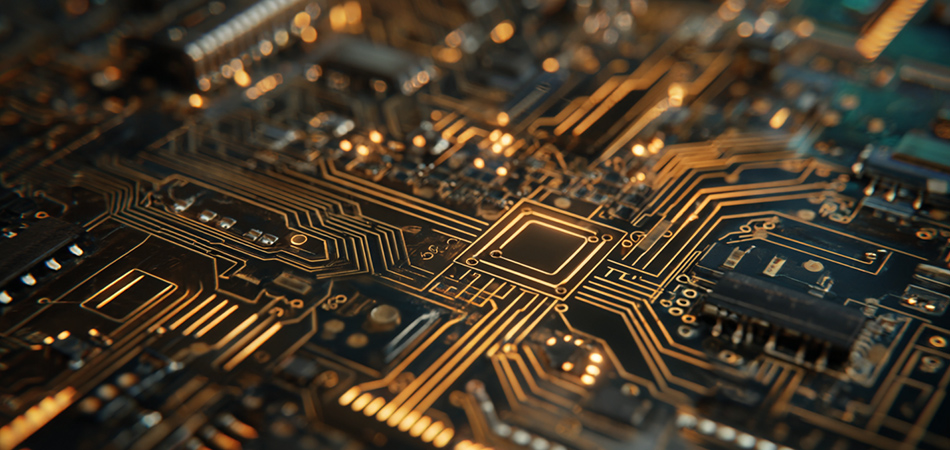
Design Considerations for Aluminum PCBs
Thermal Design
Thermal design is of utmost importance when working with aluminum PCBs. Component placement plays a crucial role in effective heat dissipation. Heat - generating components should be positioned in areas that allow for maximum heat transfer to the aluminum substrate. Thermal vias, which are small holes filled with a conductive material, can be strategically placed to connect the copper layers to the aluminum core, providing additional pathways for heat to flow. In some cases, external heat sinks or cooling fans may be integrated with the PCB to further enhance thermal performance, especially in high - power applications.
Electrical Design
The electrical design of aluminum PCBs focuses on ensuring reliable power delivery and signal transmission. Power traces need to be designed to handle the required current without excessive resistance, while signal traces should be routed to minimize interference and maintain signal integrity. Grounding strategies are also essential in electrical design. A proper grounding scheme helps to reduce electromagnetic interference (EMI) and noise, improving the overall performance of the electronic circuit. For complex designs, power and ground planes can be incorporated to provide a stable electrical reference and distribute power evenly across the board.
Mechanical Design
Mechanical design considerations for aluminum PCBs include the form factor, mounting options, and structural support. The PCB should be designed to fit seamlessly into the enclosure of the electronic device, with appropriate mounting holes and features. The thickness and shape of the aluminum substrate may need to be adjusted based on the mechanical requirements of the application. In some cases, additional mechanical supports such as brackets or frames may be used to reinforce the PCB and protect it from mechanical damage.
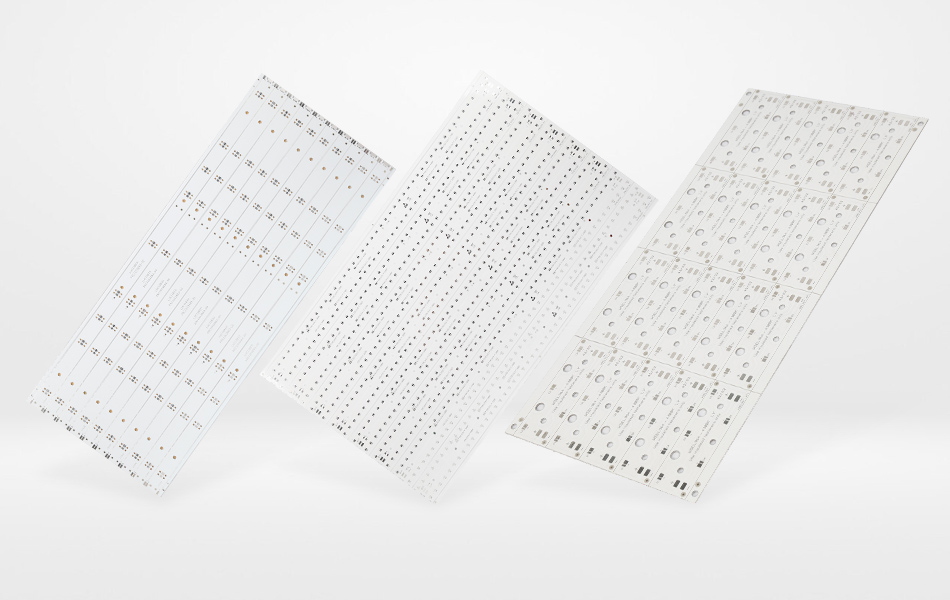
Manufacturing Processes of Aluminum PCBs
Substrate Preparation
The manufacturing process of aluminum PCBs begins with substrate preparation. The aluminum substrate is first cut to the desired size and shape using precision cutting techniques, such as CNC machining or laser cutting. After cutting, the surface of the aluminum substrate undergoes a series of treatments, including cleaning, degreasing, and surface roughening. These surface treatments improve the adhesion of the dielectric layers and enhance the overall performance of the PCB.
Dielectric Layer Lamination
Once the substrate is prepared, the dielectric layers are laminated onto the aluminum surface. High - quality dielectric materials, such as ceramic - filled epoxies or polyimides, are commonly used. The lamination process is typically carried out under high pressure and temperature to ensure a strong bond between the dielectric layers and the aluminum substrate. Precise control of the lamination parameters is crucial to achieve a uniform and defect - free bond, which is essential for the thermal and electrical performance of the PCB.
Copper Layer Fabrication
The copper layers are then applied to the dielectric - coated aluminum substrate. This can be done through processes such as electroplating or lamination of copper foil. After the copper layers are in place, photolithography or laser direct imaging (LDI) is used to transfer the circuit pattern onto the copper surface. The unwanted copper is then etched away, leaving behind the conductive traces and pads. The copper layer fabrication process requires high precision to ensure accurate trace widths and spacing, especially for fine - pitch designs.
Surface Finishing and Assembly
To protect the copper traces and improve solderability, surface finishing processes are applied. Common surface finishes for aluminum PCBs include electroless nickel immersion gold (ENIG), organic solderability preservative (OSP), and hot air solder leveling (HASL). Once the surface finishing is complete, the components are assembled onto the PCB using automated pick - and - place machines. Reflow soldering or wave soldering processes are then used to attach the components securely to the board, completing the manufacturing process.
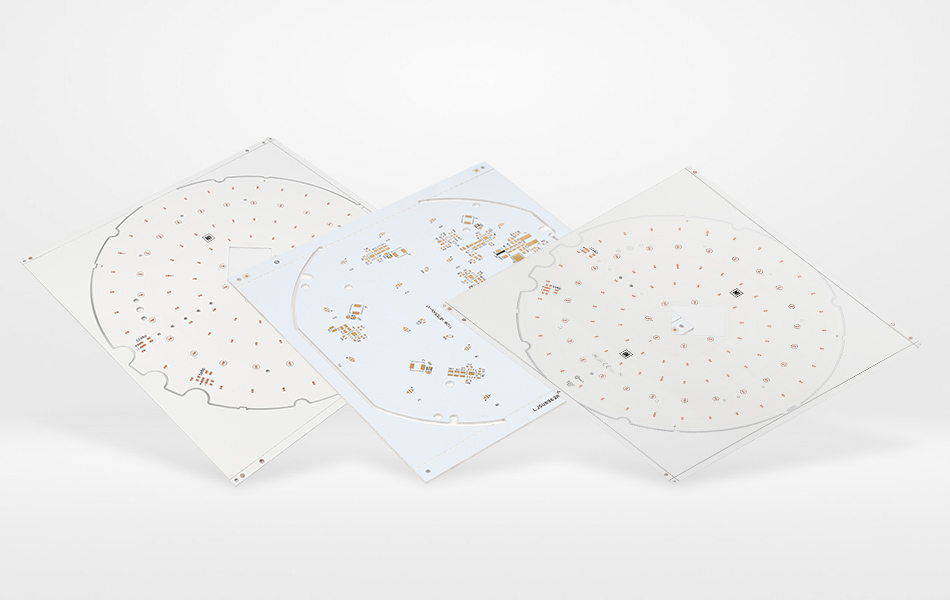
Applications of Aluminum PCBs
LED Lighting
Aluminum PCBs are widely used in LED lighting applications. LEDs generate a significant amount of heat during operation, and effective thermal management is essential for their performance and lifespan. The high thermal conductivity of aluminum PCBs allows for efficient heat dissipation from the LEDs, ensuring consistent light output and preventing color shift. In addition, the mechanical strength of aluminum PCBs makes them suitable for various lighting fixtures, from indoor recessed lights to outdoor streetlights and automotive headlights.
Power Electronics
In power electronics, such as power supplies, inverters, and motor controllers, high - power components generate a large amount of heat. Aluminum PCBs are ideal for these applications as they can handle the heat generated by power semiconductors and other components. The ability to dissipate heat effectively reduces the need for large and bulky heat sinks, allowing for more compact and efficient power electronic designs. Moreover, the mechanical durability of aluminum PCBs ensures reliable operation in power - intensive environments.
Automotive Electronics
The automotive industry demands reliable and durable electronics that can withstand harsh operating conditions, including vibrations, temperature fluctuations, and electrical noise. Aluminum PCBs meet these requirements with their excellent thermal management, mechanical strength, and electrical insulation properties. They are used in various automotive applications, such as engine control units (ECUs), advanced driver - assistance systems (ADAS), and automotive lighting, contributing to the safety, performance, and efficiency of modern vehicles.
Aerospace and Defense
In aerospace and defense applications, where weight, reliability, and performance are critical, aluminum PCBs offer significant advantages. Their lightweight nature helps to reduce the overall weight of aircraft and spacecraft, improving fuel efficiency. At the same time, their ability to withstand extreme temperatures, vibrations, and radiation ensures reliable operation in harsh environments. Aluminum PCBs are used in avionics systems, communication equipment, and military electronics, playing a vital role in these high - tech industries.
Consumer Electronics
Consumer electronics, such as laptops, tablets, and smartphones, are becoming increasingly compact and powerful. Aluminum PCBs enable the design of smaller and more energy - efficient devices by providing effective thermal management and supporting high - density component integration. The thin and lightweight form factor of aluminum PCBs is also beneficial for creating sleek and portable consumer products. Additionally, their mechanical strength protects the internal components from damage during normal use and accidental drops.
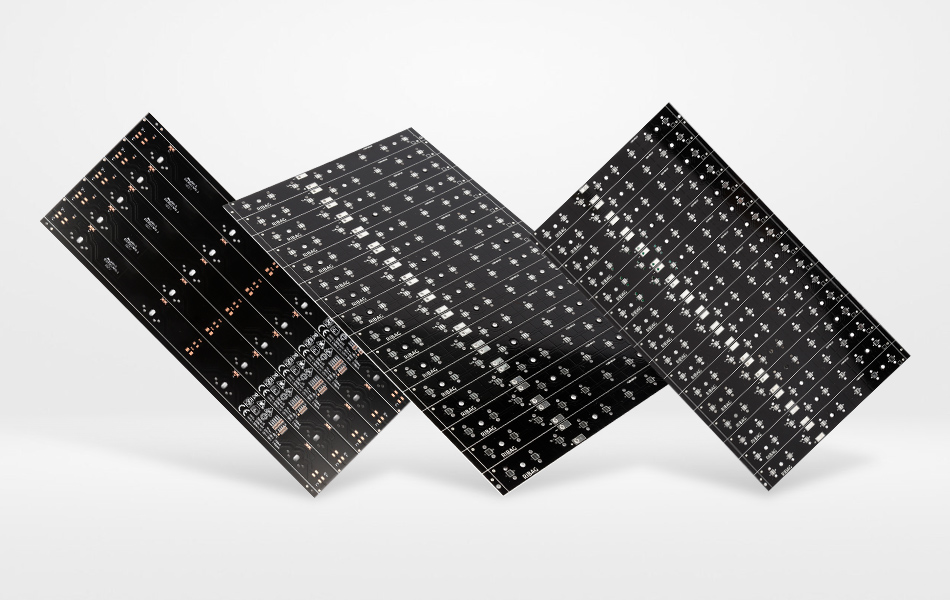
Future Trends in Aluminum PCBs
Integration with Advanced Technologies
As technology continues to advance, aluminum PCBs are likely to be integrated with more advanced technologies. For example, the increasing popularity of the Internet of Things (IoT) and 5G communication will require PCBs that can support high - speed data transfer and low - power operation. Aluminum PCBs may be designed to incorporate sensors, wireless communication modules, and other smart components, enabling the development of intelligent and connected devices.
Miniaturization and High - Density Integration
The trend towards miniaturization in electronics will drive the development of smaller and more densely populated aluminum PCBs. Advanced manufacturing techniques, such as micro - via technology and fine - pitch trace routing, will be used to achieve higher component densities while maintaining performance. Miniaturized aluminum PCBs will be essential for applications such as wearable electronics, medical implants, and miniaturized sensors.
Sustainable Manufacturing
Sustainability is becoming a major concern in the electronics industry, and aluminum PCBs are no exception. Manufacturers are exploring ways to use recycled materials in the production of PCBs, reduce energy consumption during manufacturing, and minimize waste generation. Green manufacturing practices will not only benefit the environment but also help to reduce production costs and improve the overall competitiveness of aluminum PCB manufacturers.
Enhanced Thermal Management Solutions
With the increasing power density of electronic components, there will be a growing demand for more advanced thermal management solutions in aluminum PCBs. New materials and techniques, such as phase - change materials, heat pipes, and liquid cooling, may be integrated into aluminum PCB designs to handle higher heat loads. These enhanced thermal management solutions will enable the development of more powerful and reliable electronic devices.
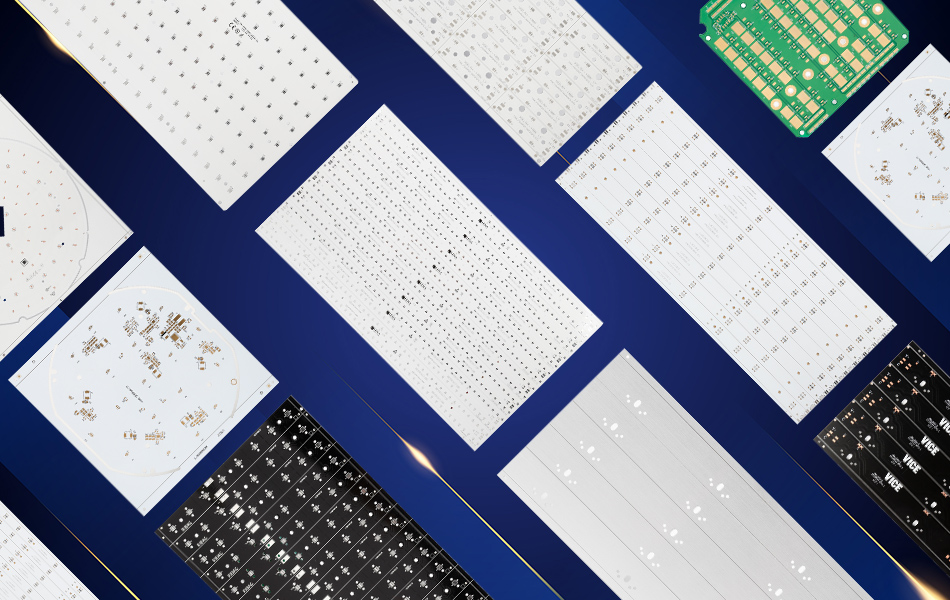
Conclusion
Aluminum PCBs have revolutionized the electronics industry with their unique combination of superior thermal management, mechanical strength, and electrical performance. From LED lighting and power electronics to automotive, aerospace, and consumer electronics, they have found applications in a wide range of fields. As technology continues to evolve, aluminum PCBs will play an even more significant role in the development of future - proof electronic devices. By staying abreast of the latest design considerations, manufacturing processes, and emerging trends, engineers and designers can leverage the full potential of aluminum PCBs to create innovative, reliable, and efficient electronic products.

Got project ready to assembly? Contact us: info@apollopcb.com



We're not around but we still want to hear from you! Leave us a note:

Leave Message to APOLLOPCB
